#oak gall ink
Explore tagged Tumblr posts
Text
youtube
#shakespeare#william shakespeare#printing#london review of books#hand printing#first folio#oak gall#oak gall ink#ink#magaines#Youtube
0 notes
Text

"Pegaſe eſt une grāt beſte terrible et eſpouentable Et naiſt en Ethiopie et a la forme dung cheval et les aiſles cōme une aigle : mais elles ſont moult plus grandes / et ſi a la teſte armee et garnie de cornes."
I was reading an Internet Archive scan of Le Jardin de santé (a 15th century herbal and bestiary originally published in German) for inspiration as I wanted to make a couple woodblock-style floral prints for t-shirts/patches, but kept getting distracted by made-up creatures and antiquated French spelling.
#medieval & early modern authors:#so there's this ~beast~#yeah it's from ethiopia you've probably never heard of it...#le jardin de santé#gart der gesundheit#hortus sanitatus#linocut#relief print#blockprinting#printmaking#pegasus#also i made this semi-transparent brown that looks like oak gall ink out of sepia charbonnel etching ink copper schminke ink and extender 👍#not that it would have been used in printing...but i'm def gonna carve the 'noix de galle' illustration just to use this colour again
19 notes
·
View notes
Text

this is not very good paper for it but some blackletter practice :)
#it’s scrap card that’s okay for drawing but apparently it does warp and bleed with this ink#good to know#the only flat nib I have is rly small so I’m learning on hard mode#I loveeee this ink tho!!!#using my cool doomsday oak gall and wine ink :)#it’s a traditional medieval ink recipe!#I have just oak gall ink too but it starts off really light so it’s hard to do lettering with#I rlly want to do a medieval setting comic drawn with period accurate materials#well maybe modern day paper lol#someday……#.doc
8 notes
·
View notes
Text
making oak gall ink!!
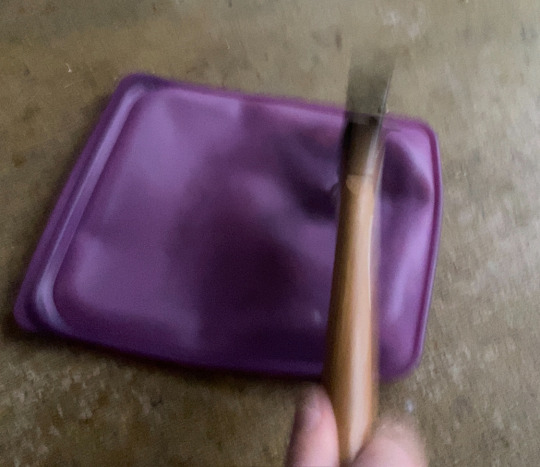

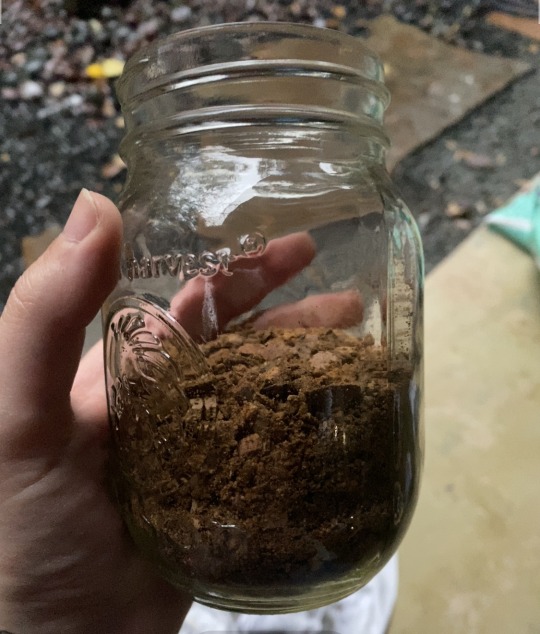
It has been a party and also the least arthritis friendly experience if i didnt have carpal tunnel already i def do now
later ill post how it turns out and link the article im using!
#Oak galls#foraging#traditional art#artists on tumblr#if i didnt do something creative today i was going to explode#Whenever the horrors come for you just make ink about it#Ink#natural ink#botany
12 notes
·
View notes
Text
The nerve! The Gall!
Oak trees have got to be pissed about galls.
Galled if you will.
"I made an apple for a wasp? I'm not even a fruit tree--And it didn't even help me grow any new oak trees? no seeds? Just a wasp house? Why would I do that???
And now some monkeys are mashing it up to make marks on... on OMG. Is that pressed pulped *flesh* ?
No, not that sheep skin one... that other one... was that... dear Edna?"
12 notes
·
View notes
Text
things you can find in my backpack today:
- two rocks I picked up off the side of the road
- a stick that I’ve half shaped into a makeshift pestle
- 10 unsewn books
- plantain chips
- ray bradbury’s twice 22 (half repaired)
- jolly ranchers
bonus:
- assorted pages from Edwardian women’s fashion magazines that wouldn’t fit in my backpack that I had to carry home awkwardly
#finals week is going I guess#everything on this list is related to my finals (except the food which is just nourishment)#meanwhile my todo list for this week is starting to sound insane#crush oak galls and begin brewing ink#deal with the dead possum under my sink#sew 10 books#etc#Oh I guess the fashion magazines aren’t related to my final#cyanoupdates#lads we are in jt
28 notes
·
View notes
Text
Good Summer for Oak Galls!
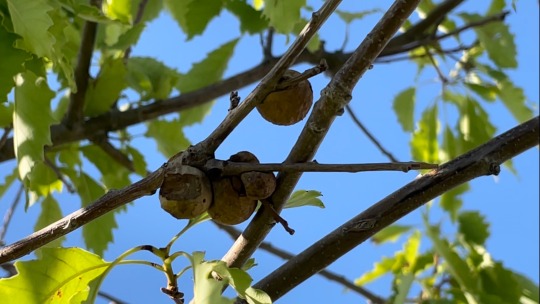
(Oak Marble Gall Wasp Photographed Summer 2023)
Oak Marble Galls are about the size of a marble and look a bit like an acorn without a cap (and growing on a branch)
Oak Galls are sometimes also called “Gall Apples” because it can resemble an apple-like structure on the branch

(Spongy Oak Apple Gall Wasp Photographed in Summer 2023)
This Spongy Oak Gall is about an inch or two wide (about the size of a small tomato)
Galls can grow on the underside of leaves or the branches of oak trees and depending on the species can range in appearances
Used traditionally to make permanent black ink!
#iron gall ink#oak galls#gall ink#black ink#diy ink#gall wasp#insects#Oak Marble Gall Wasp#Spongy Oak Apple Gall Wasp#entomology
4 notes
·
View notes
Text
tried to make a quill

#most of the ink recipes i've found need oak galls which idk where to get but i'm assuming it's just for tannins?#i'm gonna try to use other shit and see what works
4 notes
·
View notes
Text

What I imagine Brother Humphrey's original draft to look like
any monk born after 1436 doesn't know how to truly devote themselves to christ... all they know is be late for matins, copy they manuscripts, contemplative herb garden walk, be bisexual, eat eels and lie
#thats anglicana formata yes#with a quill yes#with oak gall ink yes#i am forcing myself back into medieval calligraphy/scribal practice ok
6K notes
·
View notes
Text






A princess of Mars - Edgar Rice Burroughs
Full cloth binding, backed with french groove and paper onlays, coloured edge and french double core endands.
The typeset was part of Renegade's Tiny Books Bang event last year, but it took me forever to get enough distance to come up with my own cover instead of copying the wonderful bind that was exchanged in the event.
This wonderful typeset was provided by @tinwhiskerpress
Materials used:
case covers - grey board 2,4 spine stiffener - cardboard covering materials - commercial bookcloth (Duo brick, brown) paper onlays: bugra bütten (yellow, green), marbled paper (by Renato Crepaldi)
inner book bookblock paper - Schleipen fly 05 (115gsm) endpapers - marbled paper by @renato-crepaldi endbands - buttonhole silk (Gütermann), leather core (1 and 2mm) edge colouring - oak gall ink and interference chameleon acrylic ink (Nebula copper)
Size: ~A6
See WIP pictures here and some detail pictures here
#bookbinding#a princess of mars#edgar rice burroughs#renegade bookbinding guild#not my typeset#typeset by tinwhiskerpress#renato crepalid marbled paper#renegade event#tiny books bang 2023#french double core endbands#public domain
290 notes
·
View notes
Text


Dog and cat made from natural ink (mostly oak galls oak leaves and alder cones LOL)
#cat art#dog art#ink#ink drawing#illustration#traditional illustration#kitten art#original art#traditional art#art#artists on tumblr
149 notes
·
View notes
Text
Ink!Sans Cultural Inspiration
(revised version)
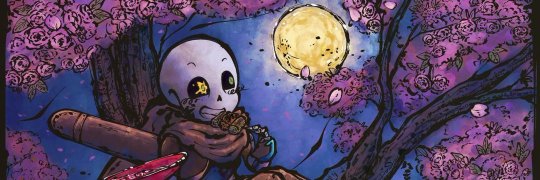
art by @/sakuramochi64 on twitter
Disclaimer!
This post aims to explore and analyze both the prominent and subtle East Asian cultural influences—primarily Japanese—that have shaped the character of Ink!Sans. By examining these influences, we can better understand how traditional East Asian aesthetics and artistic practices are woven into Ink’s design and powers. If any information in this essay is inaccurate or unintentionally offensive, please don’t hesitate to reach out! This essay serves as a revised and updated version of the analysis conducted last year, incorporating new insights and refined perspectives to enhance our understanding of Ink!Sans’s character and his cultural influences.
Ink!Sans by @comyet/@myebi
↓↓↓↓↓↓↓↓↓↓↓↓↓↓↓↓↓↓↓↓↓↓↓↓↓↓↓↓↓
.
.
.
.
''It was a night where it felt like i was a miserable artist and i was very frustrated at my work and it felt like i wasn’t worth alot (we all have these), then I came across a picture of a japanese ink brush, and it was all I needed to start doodling a concept.
That’s how Ink is born.''
.
.
According to Ink’s creator, Comyet, the idea for Ink!Sans was sparked by an image of a brush specifically crafted for sumi and Chinese ink art. In China, the tradition of using specialized ink brushes, known as Chinese writing brushes, has been a foundational element in the art of calligraphy and traditional painting for centuries. These brushes are highly valued for their precision and versatility, allowing artists to produce a range of strokes, from fine lines to bold, expressive swashes. The brush itself is composed of a bamboo handle and a carefully tapered head made from animal hair, designed to hold and release ink in controlled flows.
This tool became central not only in Chinese culture but also influenced Japanese, Korean, and Vietnamese art, where calligraphy holds a similar cultural significance and is closely tied to writing systems derived from Chinese characters. These brushes symbolize the control, fluidity, and intentionality required in both written language and visual art across East Asia. This deep-rooted cultural importance of the ink brush inspired Ink!Sans's character design and powers, allowing him to wield 'ink-based' abilities, symbolizing both creativity and adaptability. His main weapon—a brush—reflects this heritage and further emphasizes the connection between art and battle, as he channels the brush’s traditional associations with fluidity and strength into his fighting style, merging the arts of calligraphy and combat.
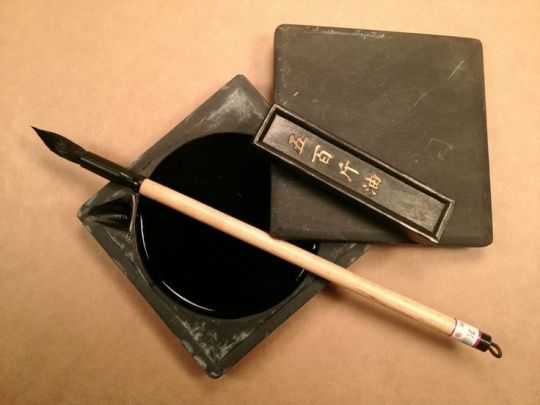
(visual example of an ink calligraphy brush)
At glance, the ink material is an enduring medium that still surrounds society till this day and it's used in multiple cultures across the world.
Writing with ink calligraphy brushes is also common in Europe and the Middle East, where artisans developed ink using a unique combination of iron salts and oak galls. This type of ink, known as iron gall ink, initially appeared in rich, dark tones, making it highly desirable for manuscripts and official documents due to its bold, readable quality. However, over time, the iron in the ink oxidized, resulting in a distinct color shift to warm, rust-like brown tones. This characteristic fading can still be observed today in ancient manuscripts, such as early European literary works, where the reddish-brown hues give a sense of history to these documents. The durability and aesthetic appeal of iron gall ink contributed significantly to its prevalence in both regions, influencing the artistry of calligraphy and manuscript illumination for centuries.
Like previously mentioned, Ink!Sans was inspired by traditional ink materials developed in East Asia, where artisans mastered the creation of carbon-based black ink, often using soot or charcoal mixed with binding agents like animal glue. This type of ink, known for its rich, deep color and lasting durability, was a staple in East Asian calligraphy and artwork. Unlike iron gall ink, this carbon-based ink maintained its dark, almost jet-black color for centuries, even in varying environmental conditions. The resilience of this ink allowed ancient texts, paintings, and scrolls to retain their striking contrast and clarity, making it a celebrated medium in East Asian art and culture. Ink!Sans draws inspiration from this enduring quality, symbolizing strength, creativity, and the timelessness of artistic expression
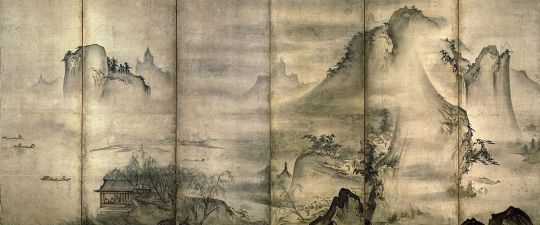
(visual example of an ancient art piece that used carbon-based black ink)
To note, unlike iron gall ink, carbon based inks are still very common to this day.
Although the primary Chinese calligraphic scripts were well established by the fourth century, calligraphy as an art form has continually evolved over the centuries, adapting to new cultural and aesthetic influences. Skilled calligraphers, who spent years mastering brush techniques and perfecting their own unique hand, were celebrated for their distinctive styles, and their works became templates for both art and personal expression. Over time, subsequent generations of artists studied these revered styles, incorporating and reinterpreting them to reflect their individual voices and the changing social landscapes. This ongoing transformation has kept Chinese calligraphy dynamic and relevant, and it remains a respected art form today, blending tradition with contemporary aesthetics.
In Japan, calligraphy also held deep cultural significance, symbolizing both personal refinement and intellectual achievement. Calligraphy was regarded as a mark of scholarly sophistication and artistic taste, with a variety of tools developed to enhance the writing experience. One notable example is the suzuribako ("ink stone box"), a portable lacquered wood box designed to store an inkstone, water dropper, brushes, and solid ink sticks. These boxes were crafted with precision and adorned with intricate lacquer designs, reflecting their owner’s status and appreciation for art. Suzuribako were lightweight and convenient, enabling calligraphers to take their tools outdoors or to scenic locations to write letters, diary entries, or poetry. This practice not only facilitated creativity but also connected the act of writing with nature, creating an immersive experience where one could find inspiration in the surrounding beauty while crafting words in elegant brushstrokes. The combination of these refined tools and settings underscored calligraphy’s role as a deeply personal and aesthetic pursuit in Japanese culture.
From this perspective, it is essential to highlight that Ink's character draws inspiration from traditional ink calligraphy, a detail reflected in his distinctive speech font, 'Note This'.


(Example of Ink's canon speaking font and ancient calligraphy)
Also clarified in an ask on her side blog, Comyet explained that traditional samurai clothing served as a key inspiration for Ink's outfit redesign in 2020. Ink's creator thoughtfully incorporated these characteristics to enhance Ink’s visual appeal and connection to his main source of inspiraton. This influence is particularly noticeable in the first and second analyses of Ink's character, where we see clear visual cues from iconic Japanese garments like the hakama.

(Ink!sans reference sheet for the 2020 design, credit goes to @/comyet)
Ink's pants were inspired by hakama, a traditional Japanese garment known for its distinctive design as skirt-like trousers, typically worn over a kimono. Hakama are historically associated with a range of activities, from ceremonial occasions to martial arts, and are often considered a symbol of status and refinement. Specifically, Ink's pants appear to be inspired by the umanori style of hakama, which is characterized by a split or division in the middle, allowing for greater freedom of movement. This style was traditionally worn by samurai and other individuals involved in horseback riding, as the design allowed for ease of movement and flexibility when mounting or riding a horse.

The umanori hakama were not only practical for riding but also served as a functional yet elegant garment, embodying the balance of form and function typical in Japanese clothing. By incorporating this style into Ink's character design, Comyet likely intended to evoke themes of mobility, agility, and strength, while subtly referencing Japanese martial traditions and the samurai ethos. This choice enhances Ink's overall aesthetic, highlighting his dynamic, action-oriented nature, suggesting that his character is both rooted in tradition and capable of fluid, graceful movement.
The hakama was not merely a functional garment but also a powerful symbol of social status, loyalty, and the samurai's role in Edo society. While the hakama was predominantly worn by samurai, it also found its place in the wardrobe of scholars, priests, and members of the aristocracy, who wore it as part of their ceremonial dress.
Furthermore, Comyet has explained that Ink's outfit and appearance were partially inspired by the clothing worn by samurai, as depicted in ukiyo-e prints from the Edo Period of Japan. Ukiyo-e, which translates to 'pictures of the floating world,' was a popular genre of woodblock prints and paintings that flourished from the 17th to the 19th centuries, showcasing scenes of everyday life, landscapes, kabuki actors, and beautiful women. However, samurai were also common subjects of these prints, often portrayed in full regalia, highlighting their status and discipline.
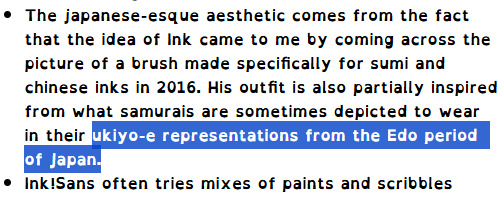
(this line of text was found within old versions of Ink's FAQ post, mainly from 2020-2021)
In these ukiyo-e representations, samurai are frequently depicted wearing a distinctive combination of garments, including elaborate kamishimo (formal attire worn by samurai), hakama (wide trousers), and haori (a kimono-style jacket worn over the kimono), along with ornate accessories such as sashes and swords. These samurai were often shown in dynamic poses, suggesting a sense of power, grace, and readiness for battle, which reflected their societal role as both warriors and landowners.
Ukiyo-e representations of samurai often carried deeper meanings beyond their visual impact. Samurai in these prints were more than just warriors; they were cultural icons, symbols of virtue, duty, and sacrifice. Some prints portrayed samurai in the context of popular stories or historical events, such as famous battles or legendary acts of heroism. For example, the prints often depicted samurai as loyal retainers or leaders fighting for justice, reflecting the ideal of bushidō, the samurai code of ethics, which emphasized virtues like loyalty, courage, and respect.

(Ukiyo-e art made by Katsukama Shun'ei, Edo Period)
During the Edo period, the hakama was an important garment worn by the nobility as part of their formal attire, complementing other traditional outfits of the time, such as the noshi and kariginu, a sleeveless jacket with distinctive, sharply defined shoulders. These garments were designed to symbolize the status and refined taste of their wearers. The hakama, with its wide, flowing silhouette, was highly functional and practical, allowing for ease of movement while maintaining an air of elegance.
On another note, Ink's design is not the only aspect influenced by Japanese culture; the musical themes associated with him also draw significant inspiration from traditional Japanese music, as described by Comyet. The incorporation of these musical elements into Ink's character enhances the depth and cultural resonance of his persona, creating a multi-layered experience that ties his abilities, appearance, and thematic representation to a broader cultural context.
A predominant theme associated with Ink that highlights his deep inspiration from traditional Asian styles is one called 'BrushWork.' This musical theme, featured in the popular series Underverse, plays a crucial role in reflecting Ink’s connection to East Asian culture, particularly through its use of the shamisen, a traditional Japanese stringed instrument, and a flute. The choice of the shamisen in this composition is significant, as it evokes the soundscape of Japan, with its distinct, plucked tones often associated with traditional music, storytelling, and performance arts.
The shamisen is a core instrument in genres such as kabuki (a traditional form of Japanese drama) and bunraku (puppet theater), where it is used to underscore the emotional intensity and narrative depth of the performances. In BrushWork, the shamisen helps set the tone for Ink’s character, enhancing the theme of 'brushwork' through its fluid, emotive sound.
Honorable mention: The instrumental video for ''Soulless Heart'', features an artwork that is inspired by traditional sumi-e (ink wash painting), a Japanese art form renowned for its elegant brushwork and minimalistic yet profound depictions of nature. This particular artwork, which accompanies the music, was created by the talented artist @/sakuramochi64, whose style reflects the delicate balance and graceful simplicity typical of sumi-e paintings.
.
.
.
Sources
1.National Museum of asian art (materials & techniques. Ink section)
2. Asian Brushpaper (an-overview-of-chinese-ink-history)
3. Wikipedia (wiki Hakama-pants+Shamisen)
4. Aikido Journal (Hakama-101)
183 notes
·
View notes
Text
youtube
this one's actually pretty normal and not a weird video this is what you do with the oak galls to make them into ink rather than about the wasps that made the oak galls exist in the first place but you can also find more wasp-centric videos if you are so inclined
listen it's still not my job to teach anyone anything but also i am metaphorically taking you all by the hand and giving you pieces of parchment to touch and making you watch weird videos about what wasp infestations have got to do with ink manufacture
and then making you learn scribal abbreviations not because it's useful but just as an act of sadism sorry i just want to see you deal with fifteenth century bilingual irish-latin nonsense
#when i was doing my masters we had a palaeography exam#where you had to list the steps involved in making a) parchment and b) oak gall ink#so i had to learn them all off by heart#i forgot them now that was several years ago#but remnants linger#parchment problems#Youtube
81 notes
·
View notes
Text

rawr
#this is using the oak gall ink :)#I dried up the sponged bits before it oxidized so it’s lighter#it’s soo cool to see it darken after you draw with it#I LOVEEEEEE drawing with analog inks I don’t know why I don’t do it more!!!!!!#doodles#.doc
6 notes
·
View notes
Text












Renascimperium
Imperial Colour History
Handmade Natural Ink Series
Handcrafted from Turkish materials, these traditional inks is perfect for creative pursuits such as painting and artistic writing. Anatolia, known in the Warhammer 40,000 universe as the birthplace of the Emperor, provides the weld we have chosen for our blend. Combined with humanity’s most iconic ingredients—madder root, iron gall, and walnut—this ink is a tribute to the past. Newton, Jane Austen, and Da Vinci once used such formulations to bring their manuscripts to life. May these hues transport you to the Hall of Leng, where the cultural and artistic heritage of Malcador’s era awaits.
-
The Emperor: Eclipse (White Oak Gall Ink Medieval Recipe)
Malcador the Sigillite: Shadow of the Regent (Black Walnut Ink)
Malcador the Hero: Old Night Sky (Sumac Leaf Ink)
Magnus the Red: Light Rubia (Mediterranean Madder Root Ink)
The Emperor: Galaxy Twilight (Anatolia Weld Ink)
-
Designed and Produced by DBOA.ioopic
Illustrated by Qunxingzhishang, Yudengdeng
#warhammer 40k#warhammer 30k#warhammer#40k#warhammer art#the emperor of mankind#malcador the sigillite#magnus the red#imperial colour history
82 notes
·
View notes
Note
have you ever used iron gall ink for calligraphy? It's what medieval scribes used to write on parchment. On of my previous hyperfixations was copying Anglo saxon manuscripts with using accurate materials, and i loved to tell people how they made the ink and parchment. It's made from gallic acid, extracted from fermented oak galls, and iron (ii) sulphate, aka copperas or Green vitriol, which is leached from iron pyrite. I don't know the chemistry but when they dry on parchment they react together to produce very dark, sharp and permanent marks. I made it once with oak galls I'd collected from various walks. Copperas is more commonly used as a lawn fertilisers today so it's easy to get online. I also made and used feather quills, which take a bit of practice, and you kind of have to sharpen as you go to keep the end sharp, but they can make beautiful letters once you get the hang of it.
I literally have a bottle of Rohrer and Klingner Scabiosa on my desk in front of me right now
42 notes
·
View notes